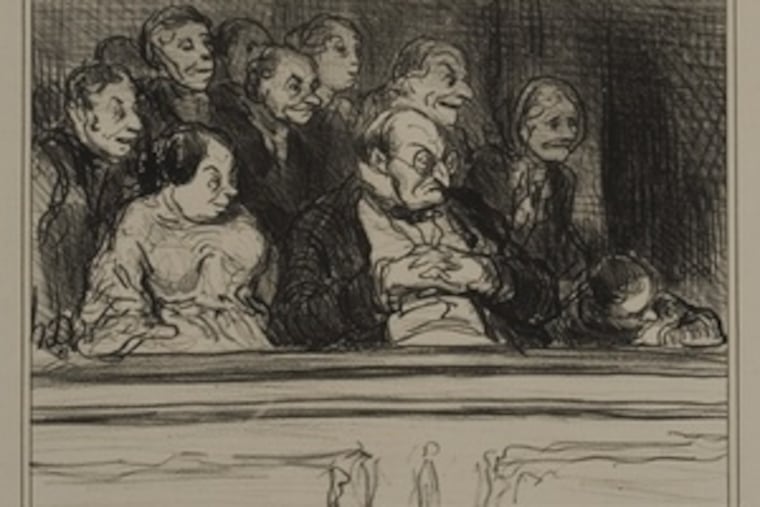Kate Bright's works conjure alluring darkness.
It's snowing at Locks, in glittering paintings

Anyone who has ever trudged through the Wissahickon woods after a heavy snowstorm has seen Kate Bright's paintings. Never mind that Bright is British and lives in London, or that the paintings are based on photographs probably taken elsewhere (her catalog cites Wales, British Columbia and Michigan as three sources) and sprinkled with glitter - they will immediately remind Philadelphians of their own sublime backyard, and in more ways than one. Beneath their sparkly surfaces, Bright's cropped, slightly disorienting views of branches echo the work of three Philadelphians: painter Emily Brown and photographers Ray Metzker and Diane Burko, who is better known as a painter. Forests, copses, and undergrowth have been highly visible here over the last eight years.
Fortunately, Bright's glitter (which, interestingly, does not show up in photographic reproductions of her paintings) is so ubiquitous and so evenly distributed - wherever she intends sunlight to reflect off snow, which means almost everywhere - that it accounts for most of the surprise of her paintings, as she surely intends it to. It makes her snow look like the actual stuff in a way that not even the most deft brushwork could muster (and Bright paints impressively, by the way).
The glitter also gives her wintry forests a sweet, sentimental quality: Sugar-coated confections and old-fashioned Christmas cards, advent calendars and tree ornaments come to mind. Bright's paintings would be nice to fall into, even the one showing a distant squall.
They conjure a fairy tale's darkness behind the prettiness, too: You might get lost or fall asleep in her alluring, silent wilderness. Or, more ominously, these images may represent the winters of the past.
Plus ça change . . .
If you enjoy finding eerie parallels between past and present, make a point of getting to La Salle University Art Museum's small but deliciously relevant and mean-spirited "The Buffoonish Bourgeois: Caricatures and Satire of the Upper-Middle-Class Businessman in 19th-Century France" before it closes next week. It's hard to say if things have gotten better or worse.
The exhibition, organized by the museum's assistant curator of art, Carmen Vendelin, is composed largely of journal illustrations from the museum's own collection by Honoré Daumier, Paul Gavarni, Frantisek Kupka and Charles Vernier. (A lithograph by Alfred Jarry was lent to the show by the Jane Voorhees Zimmerli Art Museum at Rutgers, and 10 Daumier prints were given to the museum by historian James R. Tanis when he learned of the exhibition).
Not much has changed, after all. In a Daumier print, an overweight "collector" is shown in a gallery, measuring a painting he likes, and complaining to the gallerist that it's too small for his needs. In a Gavarni, two indolent, handsome young men (one brandishing a riding crop) sit in a mansion's open window, arguing over which of them is being checked out by a passing woman. The debate ends on a Jimmy Kimmel note when one says to the other, "Look, look, look, we are both right. . . . She is cross-eyed!" Even the cult of pets - as alive and well in 19th-century France as it is today - is mocked in a Daumier depiction of a man applying for dual membership in a club with his standard poodle.
One suggestion: Look at the university's map on its Web site before you go. If you drive, the museum is most easily accessed by parking on 20th Street.